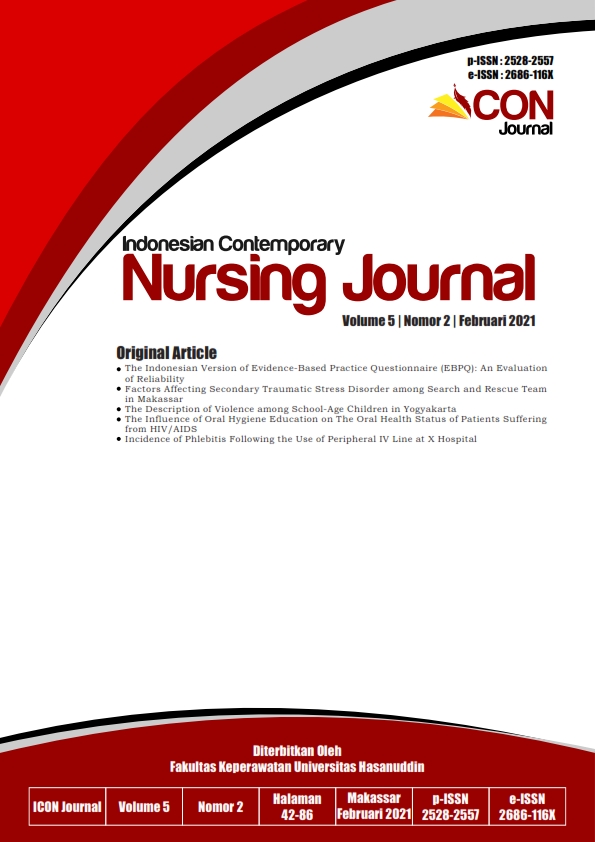Potential of Honey Hydrogel Modern Dressing in Wound Healing of Patients with Grade II Diabetic Foot Ulcer
Keywords:
Diabetic Foot Ulcer, Honey Hydrogel, Modern DressingAbstract
Aims: To analyze the potential of honey hydrogel modern dressing in wound healing process in patients with grade II diabetic ulcers. Methods: The research design used a true experiment with a randomized pretest posttestcontrol group design. This study had 36 respondents who were divided into 2 groupsthrough simple random sampling. The intervention group was given honey hydrogel with 4measurements. The first measurement or pretest on day 1, the second measurement orposttest 1 on day 7, the third measurement or posttest 2 on day 14, and the fourthmeasurement or posttest 3 on day 21. The instrument used to measure patient woundhealing using the Bates-Jensen Wound Assessment Tool (BWAT). Results: The increase in the mean wound healing score of patients who were given honeyhydrogel modern dressing from a score of 42.11 on day 1 to 34.56 on day 21 with p = 0.001while the increase in the mean wound healing score of patients who were givenmanufacturer hydrogel modern dressing from a score of 41.67 on day 1 to 37.17 on day 21with p = 0.001. The effect size between the intervention group and the control group is quitestrong with a value of 0.78. Conclusion: Honey hydrogel has the potential to promote wound healing in patients withgrade II diabetic ulcers. Further research is recommended to explore the use of honeyhydrogel by innovating the manufacturing process to ensure consistent dosing in thetreatment of grade II diabetic ulcers.Downloads
Download data is not yet available.
Dimensions
Published
2023-08-25
How to Cite
Afikirtiani, W., Arwani, A., & Widigdo, D. A. M. (2023). Potential of Honey Hydrogel Modern Dressing in Wound Healing of Patients with Grade II Diabetic Foot Ulcer. Indonesian Contemporary Nursing Journal (ICON Journal), 8(1), 7-15. https://doi.org/10.20956/icon.v8i1.28153
Issue
Section
ORIGINAL ARTICLE
Copyright & Licensing
Authors who publish with this journal agree to the following terms:
Authors retain copyright and grant the journal right of first publication with the work simultaneously licensed under a Creative Commons Attribution License that allows others to share the work with an acknowledgement of the work's authorship and initial publication in this journal.
Authors are able to enter into separate, additional contractual arrangements for the non-exclusive distribution of the journal's published version of the work (e.g., post it to an institutional repository or publish it in a book), with an acknowledgement of its initial publication in this journal.
Authors are permitted and encouraged to post their work online (e.g., in institutional repositories or on their website) prior to and during the submission process, as it can lead to productive exchanges, as well as earlier and greater citation of published work (See The Effect of Open Access).
Authors retain copyright and grant the journal right of first publication with the work simultaneously licensed under a Creative Commons Attribution License that allows others to share the work with an acknowledgement of the work's authorship and initial publication in this journal.
Authors are able to enter into separate, additional contractual arrangements for the non-exclusive distribution of the journal's published version of the work (e.g., post it to an institutional repository or publish it in a book), with an acknowledgement of its initial publication in this journal.
Authors are permitted and encouraged to post their work online (e.g., in institutional repositories or on their website) prior to and during the submission process, as it can lead to productive exchanges, as well as earlier and greater citation of published work (See The Effect of Open Access).

